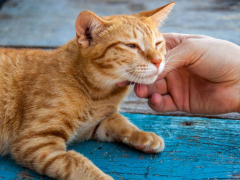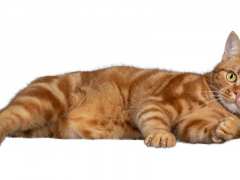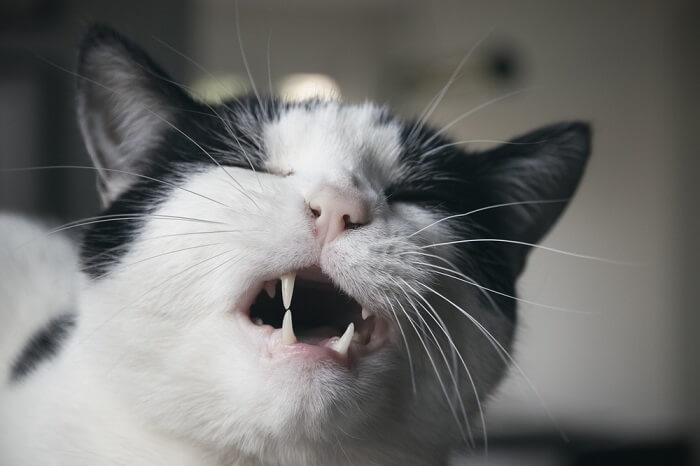
Pain is defined as “a highly unpleasant physical sensation caused by illness or injury”. Cats feel pain in just the same way as we humans feel pain, and cat carers rightly want to do all that they can to protect their pets from this unpleasant sensation.
Quality of life is important for cats, and that means ensuring that they remain as pain-free as possible.
The aim of this article is to help cat owners understand the signs that suggest that their cat may be in pain, and to explain the best and safest ways of relieving cat pain with pain medication.
How to Tell if a Cat Is in Pain?

Cats who are in pain due to illness or injury may lash out with violent behavior.
Many years ago, it was believed that animals, including cats, would vocalise if they were in pain, and therefore, if they were not vocalising, they were not in pain. When you think about it, this is clearly a false idea: when we humans are in pain, sometimes we just withdraw from the world, remaining silent. We now know that the same applies to cats.
Also Read: Excessive Meowing In Cats Explained (Causes And Solutions)
Studies were carried out around 40 years ago, giving pain relief (analgesia) to cats recovering from routine spaying operations. The cats that received pain relief were quicker to wake up from anesthesia, quicker to return to normal interactive behavior, and quicker to start eating again, compared to cats that received no pain relief.
So we now know that careful observation of behavior changes by pet owners is needed to work out that a cat may be in pain.
Signs of Pain in Cats
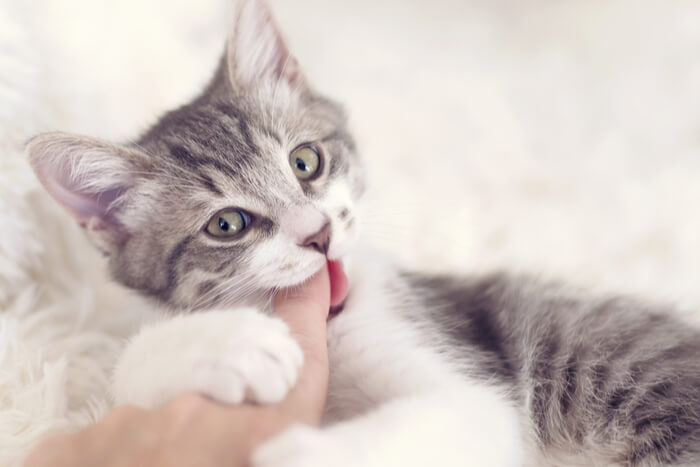
Cats will sometimes bite or exhibit other aggressive behaviors because they are in pain.
Unlike humans, cats cannot tell us when they are in pain, so we need to observe them closely and carefully to try to identify that they may be suffering.
Typical signs of pain to look out for include:
Changed Behavior
- Loss of appetite.
- Lethargy or lack of energy.
- Reduced interest in playing, social interactions and normal curious behavior.
- Withdrawing on their own, hiding
- Lameness or limping
- Obvious difficulty in moving around
- Reduced movement and less activity.
- Changes in normal behavior. Eg not jumping up onto chairs, not going up stairs.
- Increased irritability, less friendliness
- Increased vocalisation e.g. meowing, growling, Yowling, hissing.
- Decreased grooming e.g coat may become more matted, less well groomed.
- Changed behavior around the litter box
Changed Body Language
- Body more hunched up
- Head held lower than normal
- Tail held lower, or less mobile than normal
- Changed facial expressions e.g. half-closed eyes, flattened ears, less relaxed facial expressions
Conditions That May Cause Pain In Cats
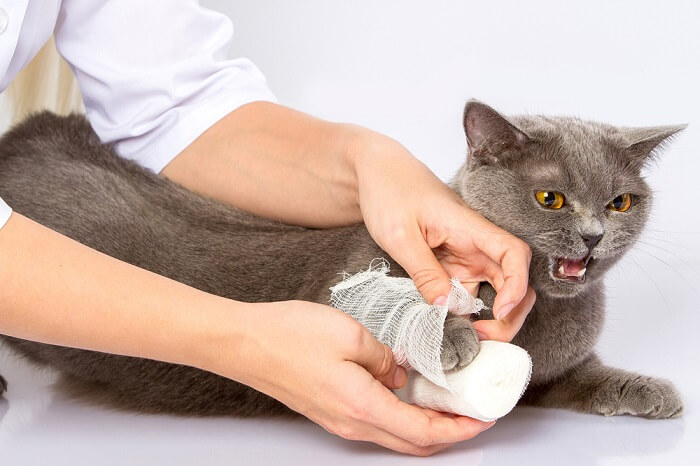
Many processes in the body can cause pain in cats, including physical injuries and illnesses.
We know that there are some disease processes that can cause pain in cats, so when these diagnoses are made, we should pay attention to ensuring that adequate pain relief is given.
Examples include:
- Physical injuries including cat fights: any time there is tissue damage, there is pain
- Post-surgery
- Osteoarthritis (typically, older cats, finding it more difficult to move around than in the past)
- Gastrointestinal disease (eg inflammatory bowel disease)
- Cystitis
- Dental disease
- Ear disease
- Sore eyes
- Ingrown claws
- Matted fur on the coat
Over The Counter Pain Relief For Cats
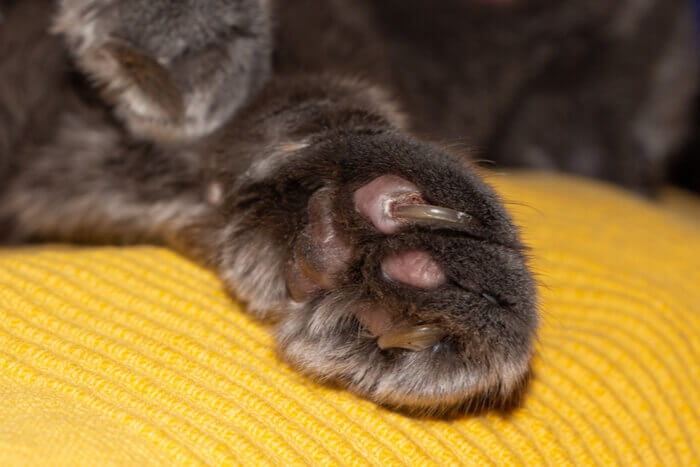
Left untrimmed, cat nails can grow until they puncture the paw pad, which is painful and can cause an infection.
While it is easy for humans to purchase over-the-counter pain-relieving medication for themselves, and it’s possible to buy safe pain relief for dogs in the same way, it’s far more complicated for cats.
Cats have particular aspects of their metabolism, with different enzymes and other sensitivities, which mean that they are especially prone to toxicity caused by giving inappropriate pain relief.
Examples of highly toxic pain relieving agents for cats include most products that are commonly given to relieve pain in humans.
Also Read: Aspirin Poisoning In Cats: Causes, Symptoms, & Treatment
These should never be given to cats (or only with very close veterinary supervision), as the resulting toxicity can be fatal. Products to avoid include acetaminophen (“Tylenol” or paracetamol), ibuprofen, aspirin, and many others
Frustrating as this is for cat owners, it means that pain relief for cats always needs to be given under veterinary supervision.
Prescribed Pain Relief For Cats
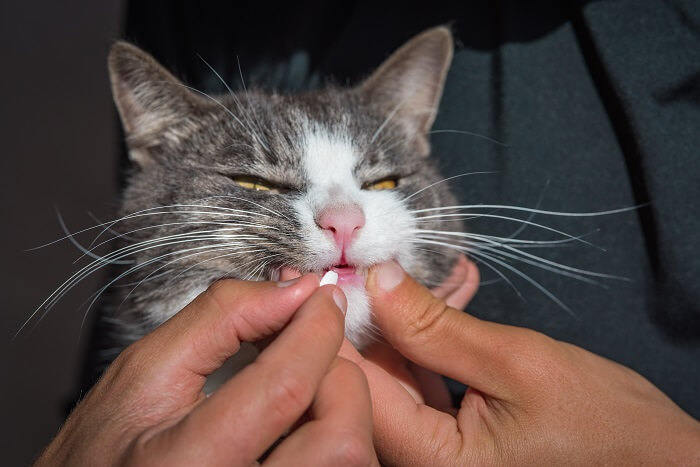
Obtaining pain medications for cats is a little bit more complicated than it is for humans or dogs. Always give your cat medication that has been proven effective in veterinary medicine.
The only safe way to provide pain relief for cats is to work closely with DVM veterinarians, using prescription-only pain relieving products that have been proven in veterinary medicine to be effective.
These are FDA approved, with studies demonstrating that they are safe and efficacious for cats. It’s very important that they are only used in appropriate cases, adhering to strict dosage guidelines, given at carefully controlled intervals. Even with these products, toxicity is possible, so care needs to be taken.
There are a number of different groups of pain relief.
Non Steroidal Anti Inflammatory Drugs (NSAIDS)

NSAIDs are a broad group of drugs that are used very widely for humans and dogs especially to alleviate chronic pain.
Cats are very sensitive to toxicity from these drugs, but studies have been carried out on some products that demonstrate that they can be used safely under close supervision. They are often used to successfully manage pain management in a number of chronic diseases, including osteoarthritis, as well as in post-operative situations.
Examples include:
- Meloxicam (e.g. “Metacam”): this can be given as liquid medication, either directly or in the food
- Robenacoxib (e.g. “Onsior”): this is normally in tablet formulation
Opioid Type Medication
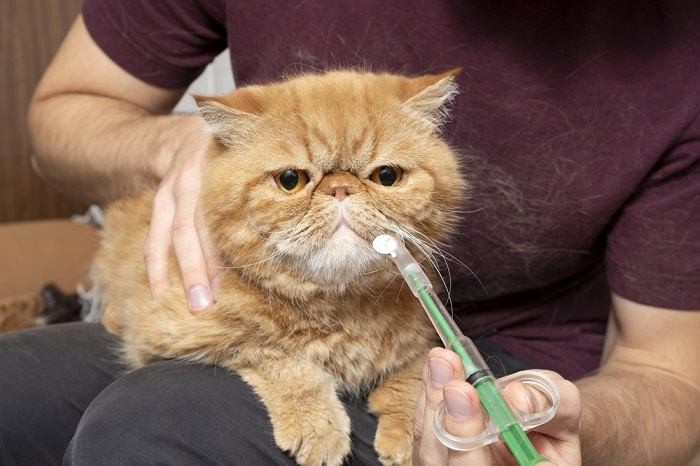
This type of potent medication tends to be used for short term use in veterinary hospital settings (eg post-operative) to help cats deal with severe pain. There are very strict legal controls on the use of these drugs due to the potential for abuse of their use for humans.
- Butorphanol – short acting, usually given by injection
- Buprenorphine – longer lasting, usually given by injection
- Hydromorphone – vomiting is a significant side effect, usually given by injection
- Fentanyl – available as injections and also skin patches for longer term use.
- Methadone – available as injections and oral products
- Morphine – vomiting is common, available as injections
- Tramadol – less potent, available as injections and oral formulations
Also Read: A-Z List of Cat Health Medication
Anti-Nerve Growth Factor Monoclonal Antibody Therapy
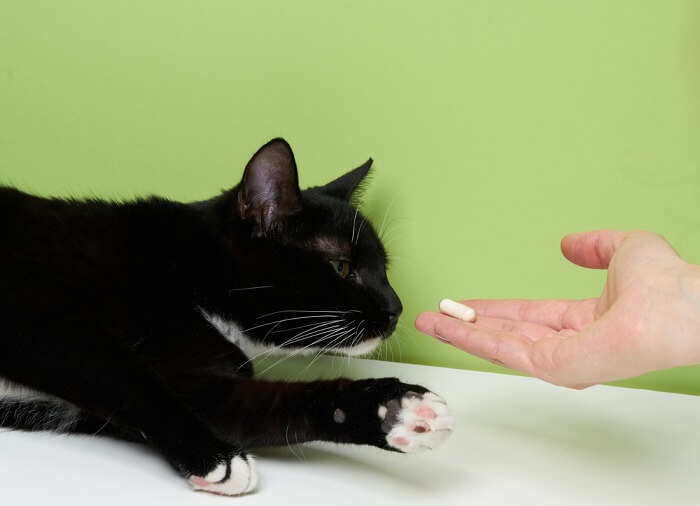
This is the most exciting recent advance in pain relief for cats. Nerve growth factor (NGF) plays a role in the development of pain and sensitization of afferent nerves from affected areas (e.g. arthritic joints).
The monoclonal antibody (licensed name “Solensia“) binds to NGF, removing it from the system. This product is given by sub-cutaneous injection, with one injection providing pain relief for up to 6 weeks. Studies to date show that it provides more effective pain relief than NSAIDS.
Other Types Of Pain Relieving Medication
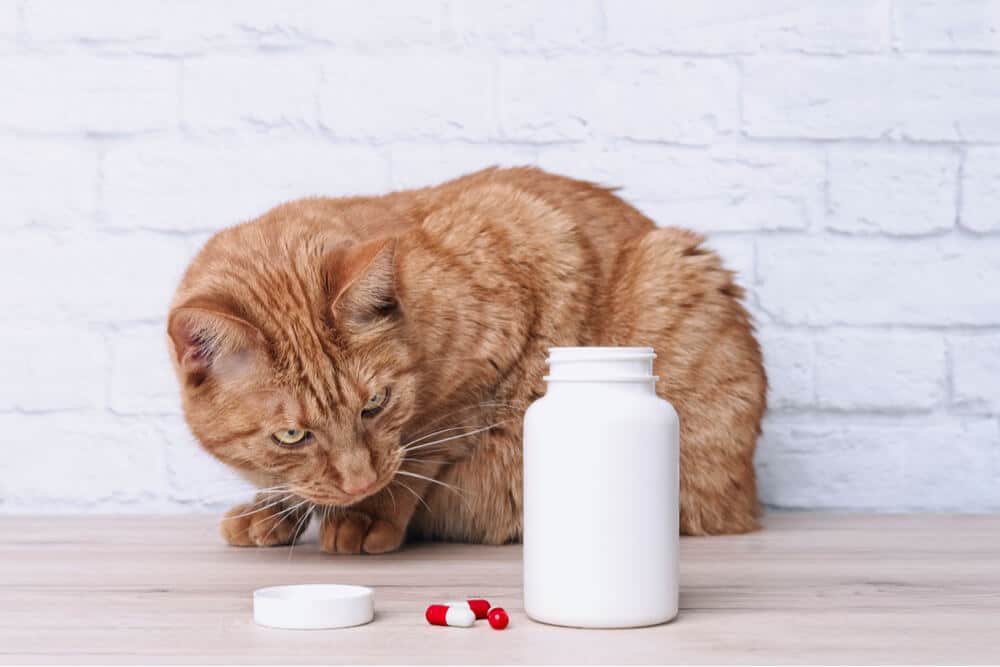
Causes of poisoning in cats are wide-ranging, including the ingestion of human medications.
A number of other types of pain modifying medication may be prescribed under veterinary supervision in certain circumstances:
- Corticosteroids: these have a broad anti-inflammatory effect that includes some level of pain relief
- Gabapentin: this works in a different way, and tends to be used for neuropathic pain, cancer pain, hyperesthesia syndrome, as well as being used as an anti-convulsant in some cases
- Cannabinoids (CBD): this may be used for longer term pain relief in certain conditions but there is still a shortage of reliable, licensed formulations for cats
Safer Alternatives
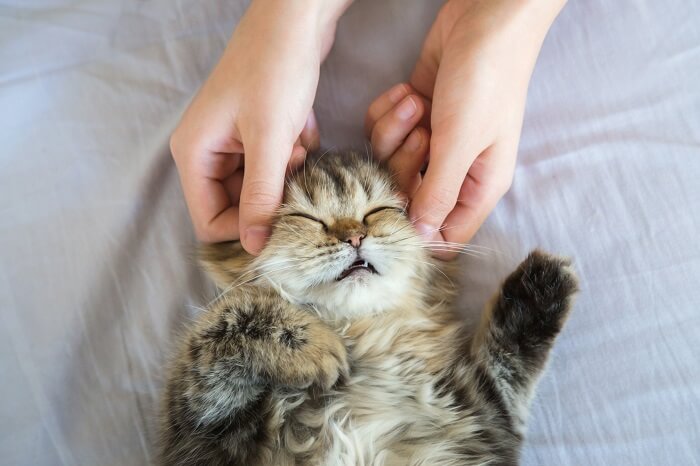
It is not possible to suggest home remedies to safely relieve pain in cats. Some safe possibilities that may help to some extent include:
- Acupuncture: this can be used intermittently (eg once weekly), with its claimed effects involving the release of pain-relieving endogenous substances (e.g., opioids) as well as inhibiting release of pain-inducing substances (e.g. inflammatory cytokines). Cat owners need to work with an acupuncturist skilled and licensed to work with animals.
- Supplements: Nutritional supplements such as fatty acids may have some anti-inflammatory effects that can help to modulate the pain response, but they will not provide adequate analgesia to relieve significant pain on their own.
Also Read:
- Acupuncture For Cats: What You Need To Know
- The 6 Best Cat Vitamins And Supplements
Conclusion
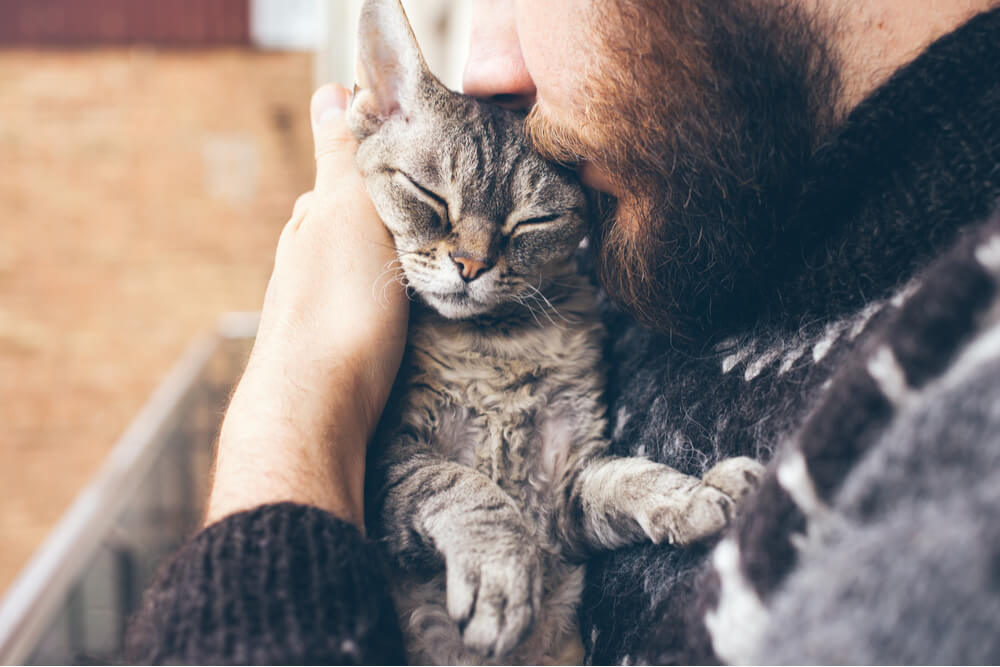
Effective pain relief is as important for cats, as much as it is for humans. However, due to the particular sensitivities of the feline metabolism, many types of pain relief are highly toxic in cats. This means that pain relief must always be given only under very close veterinary supervision.
